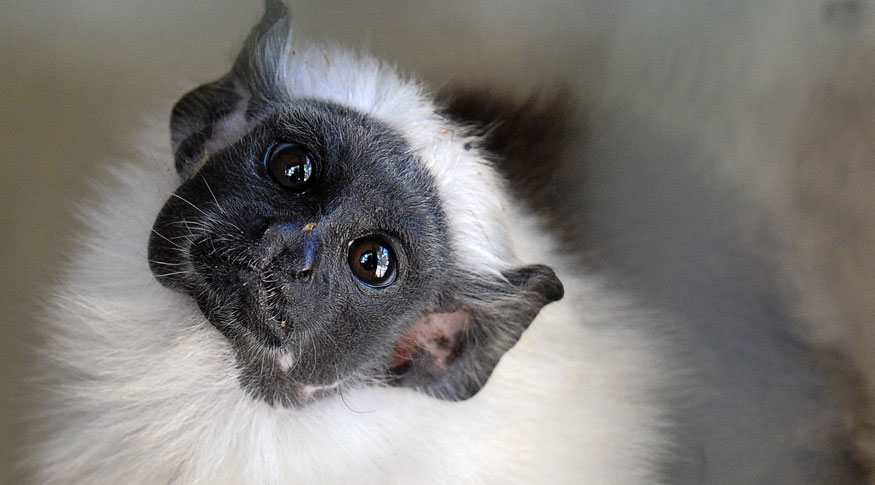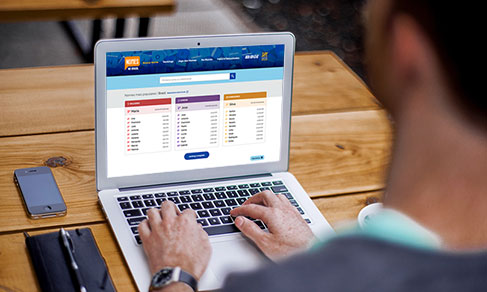Environmental-Economic Accounting
More than 3,000 threatened species of animals and plants in 2014
November 05, 2020 10h00 AM | Last Updated: November 13, 2020 11h55 AM
Highlights
- In 2014, Brazil had 3,299 threatened species of animals and plants.
- The threatened species are part of the Official National Lists of species of fauna and flora threatened with extinction, of ICMBio and CNCFlora/JBRJ, which totals 12,262 species of fauna and 4,617 species of flora among the more than 166 thousand recognized species in Brazil
- The Atlantic Forest (Mata Atlântica) was the biome with the most threatened species: 1,989, or 25% of the species in the biome in the study. Then comes the Cerrado, with 1,061 (19.7%).
- The Pantanal and the Amazon (Amazônia) have the highest proportions of species in the “Least Concern” category (88.7% and 84.3%, respectively)
- The study shows that the country already has at least ten species of extinct native fauna.
- Another species extinct in the wild depends on captive breeding programs: the Mutum-do-Nordeste (Pauximitu), a native bird to the Atlantic Forest.

Brazil had 3,299 species of animals and plants threatened with extinction in 2014. This number represents 19.8% of the total of 16,645 species surveyed in the Ecosystem Accounting: Species Treatened with Extinction in Brazil, released today (5) by the IBGE. The study analyzed the numbers of threatened species in the Brazilian biomes (the Amazon/Amazônia, Cerrado, Caatinga, Atlantic Forest/Mata Atlântica, Pampa, Pantanal and Sea and oceanic islands) and different types of ecosystem realms (terrestrial, freshwater and marine).
The survey was based on the official lists of the Ministry of the Environment, developed by the Instituto Chico Mendes de Conservação da Biodiversidade (Chico Mendes Institute for Biodiversity Conservation - ICMBio) and the Centro Nacional de Conservação da Flora do Jardim Botânico do Rio de Janeiro (National Center for Plant Conservation of the Botanic Garden of Rio de Janeiro - CNCFlora/JBRJ). The lists register 4.617 flora species and 12,262 fauna species, respectively, within the group of more than 166 thousand (49,168 plants and 117,096 animals) recognized species in Brazil.
The Atlantic Forest (Mata Atlântica) was the biome with the highest number threatened species: altogether, researchers found 1,989, or 25% of the total species assessed in the biome. Then comes the Cerrado, with 1,061 (19.7%).
Atlantic Forest (Mata Atlântica) is the most threatened biome, but Cerrado deserves attention
The two Brazilian hotspots - a concept that establishes that a biome has a high number of endemic species and a high loss of natural area - the Mata Atlântica and the Cerrado are a matter of concern for specialists. In the case of the former, there have been significant losses in the area of natural cover over the centuries, due to the greater presence of anthropized areas, those under great human interference, due to the history of settlement and urbanization, from the coast to the interior, in the formation of the Brazilian territory. For example, of the total assessed species of the marine flora native to the biome, 32.7% (146) are threatened.
In the Cerrado, in turn, the increase in the anthropized area is more recent, growing in recent decades. "The survey shows that these actions are reflected in the situation of fauna and flora species, after the biome has lost half of its natural cover in this period," says the survey coordinator, Leonardo Bergamini, referring to the study Uso da Terra nos Biomas Brasileiros (Land Use in Brazilian Biomes), published by the IBGE in September.
The Cerrado also has the second lowest proportion of species in the “least concern” category (67.0%).
Pantanal and Amazon (Amazônia) have best results in species preservation
The list of biomes goes on with the Caatinga, with 366 threatened species (18.2%), and the Pampa, with 194 species at risk (14.5%). The latter is the only biome in which the freshwater realm has a higher proportion of threatened animal species than the terrestrial realm: 48 species, which represents 8.4% of the freshwater species assessed in the Pampa, against 5.4 % in the terrestrial realm.
At the bottom of the list, the Pantanal and the Amazon (Amazônia) have the highest proportions of species in the “least concern” category (88.7% and 84.3%, respectively) and, also, the lowest percentage of species considered threatened: 3.8% and 4.7%, in that order. In absolute numbers, there are 54 endangered species in the Pantanal and 278 in the Amazon.
At least ten native fauna animals are already extinct
The study also shows that the country already has at least ten species of native fauna extinct: the birds Maçarico-esquimó (Numenius borealis), Gritador-do-nordeste (Cichlocolaptes mazarbarnetti), Limpa-folha-do-nordeste (Philydor novaesi), Peito-vermelho-grande (Sturnella defilippii), Arara-azul-pequena (Anodorhynchus glaucus), and Caburé-de-pernambuco (Glaucidium mooreorum); the amphibian Perereca-verde-de-fímbria (Phrynomedusa fimbriata); the mammal Rato-de-Noronha (Noronhomys vespuccii); and the marine fish Tubarão-dente-de-agulha (Carcharhinus isodon), and Tubarão-lagarto (Schroederichthys bivius).
In addition to these, there is one more species extinct in the wild that currently depends on captive breeding programs: the bird Mutum-do-Nordeste (Pauxi mitu), native to the Mata Atlântica.
Assessing species requires time, data and resources
Species in the categories 'vulnerable', 'endangered' and 'critically endangered' are considered threatened. Mr. Bergamini explains that, to compose this classification, the methodology covers five criteria. “Population reduction is one of them. In other words, if a species lost between 50% and 69% of its individuals in a certain period of time, it will be classified in the 'vulnerable' category. If it is greater than or equal to 70%, it will be in the 'endangered' category, and so on," he exemplifies. "Whoever is in the 'near threatened', if nothing is done, can enter the ‘threatened’ categories", adds the specialist.
Regarding the methodology of the study, Mr. Bergamini explains the reason for the survey to cover only 10% of the fauna and 11% of the flora. "The assessment process is complex, takes time, data and resources. And since the number of species is very high, the option of the institutes responsible for this first study was to define priorities." One of the criteria used to draw up the fauna list was the need to research, now, all vertebrate animals and some invertebrates with economic interest or greater propensity to disappearance, whereas in the case of flora, the list of species was based on the fact that they had previously appeared in other state, national lists or on the International Union for Conservation of Nature's Global Red List (IUCN).
The Threatened Species Accounts is part of the IBGE's Environmental-Economic Accounting and represents another step towards the inclusion of the country's environmental indicators in the National Accounts.




















